The Secret to Timeless Kitchen Design Build a Space That Never Goes Out of Style
Kitchens are more than functional spaces — they’re the heart of the home, the stage for family life, conversation, and memory-making. Just as you take care and Design Your Living room. But while kitchen trends come and go, timeless kitchen design remains immune to the pull of fleeting fads. So what makes a kitchen timeless? It’s not about playing it safe — it’s about designing with permanence in mind.
Timeless kitchens combine aesthetic longevity with functional intelligence. They draw from classic forms, balance tradition and modernity, and use materials and finishes that gracefully withstand both time and trend. In this guide, we explore the foundational principles of a kitchen that never goes out of style — and how to bring them into your own home.
Why Timeless Design Matters in the Kitchen
A kitchen renovation is a major investment — both financially and emotionally. Unlike throw pillows or paint colors, cabinetry, countertops, and tile are not easily swapped out. That’s why timelessness is more than a style choice; it’s a design strategy.
A timeless kitchen isn’t defined by era-specific features but by enduring design principles. It merges heritage and innovation, function and form. The result is a space that feels current today and will feel equally relevant in a decade or two.
It’s also a matter of resale value. Timeless kitchens appeal to a wide range of tastes, increasing your home’s long-term market appeal.
But timeless doesn’t mean boring. It’s about editing thoughtfully, choosing quality over novelty, and allowing your personality to come through in subtle, enduring ways.
Cabinetry: The Backbone of a Classic Kitchen
If walls define a room, cabinetry defines a kitchen. Timeless kitchens often start with classic cabinet profiles like Shaker, recessed panel, or inset cabinetry. These styles date back centuries but still feel modern because of their clean lines and understated elegance.
Shaker cabinets, for instance, have been used in American homes since the 18th century. Their simple frame-and-panel construction has made them a go-to for designers seeking both tradition and versatility. In white, they read traditional; in black or navy, they feel sharp and contemporary.
Avoid ornate carvings, over-trendy hardware, or overly glossy finishes. Stick to materials like painted hardwood, oak, or walnut. For a more modern interpretation, go handleless with push-latch systems while keeping classic silhouettes.
Painted finishes in whites, creams, soft greys, or muted blues tend to stand the test of time. Wood tones can also create a grounded feel — especially when paired with more contemporary details like matte black hardware or honed countertops.
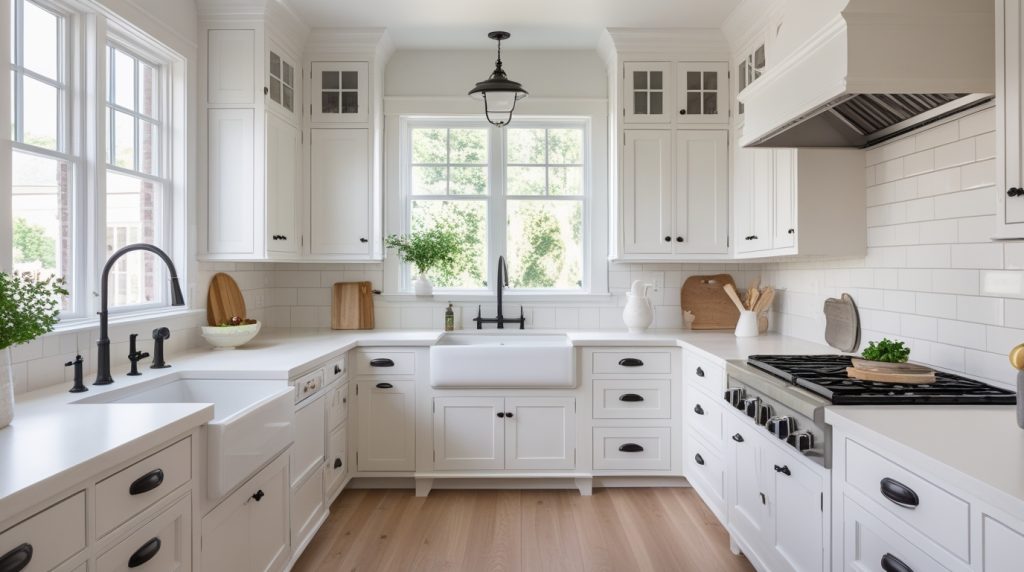
Layout: Built for Efficiency, Designed for Life
Truly timeless kitchens prioritize functionality as much as form. That’s why the layout is critical. The most enduring kitchen layouts include the work triangle (sink, stove, and refrigerator) concept, which promotes efficiency and flow.
Whether you’re working with a galley, L-shape, U-shape, or open-concept plan, timeless design means avoiding awkward configurations or oversized islands that interrupt traffic.
Consider the ergonomics. Cabinets and drawers should open easily without obstruction. Islands should be proportionate — not too large or too cramped. Walkways should be generous enough for multiple people to cook or gather comfortably.
Timeless layouts are intuitive. They support daily rituals — morning coffee, family dinner prep, or weekend baking — and do it seamlessly. It’s less about “zones” and more about the lived experience of the space.
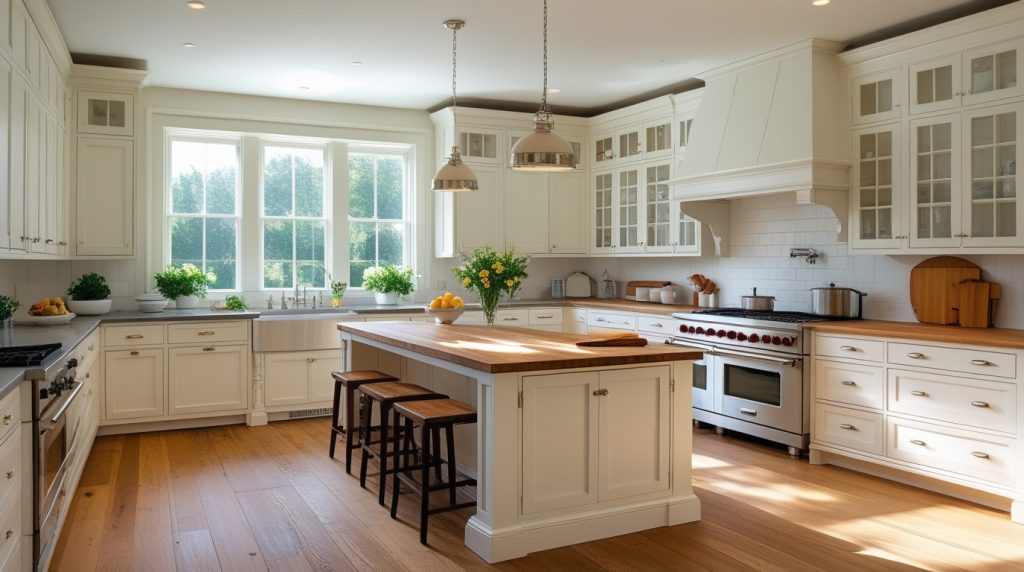
Material Selection: Natural, Durable, Honest
The materials you choose make or break the longevity of your kitchen — not just aesthetically, but in terms of performance. Timeless kitchens favor materials that age well and gain character over time.
Natural stone countertops like marble, granite, or soapstone offer a rich, authentic look that can’t be replicated by synthetic alternatives. Yes, marble can stain — but patina is part of its charm in a lived-in kitchen. Honed or leathered finishes offer a softer, more traditional feel.
Hardwood floors remain a timeless choice, especially in warmer mid-tones like white oak or walnut. Tile is also a durable option — but avoid overly trendy patterns and stick with classic shapes like hex, herringbone, or brick-laid subway.
For backsplashes, white subway tile with a soft grout line continues to be a tried-and-true staple. Handmade ceramic tiles, with their slight irregularities and glazes, add a subtle warmth that feels timeless and artisanal.
Avoid anything that feels overly engineered, too glossy, or overtly trendy (think: colored quartz, high-gloss laminates, or ultra-modern composite finishes).
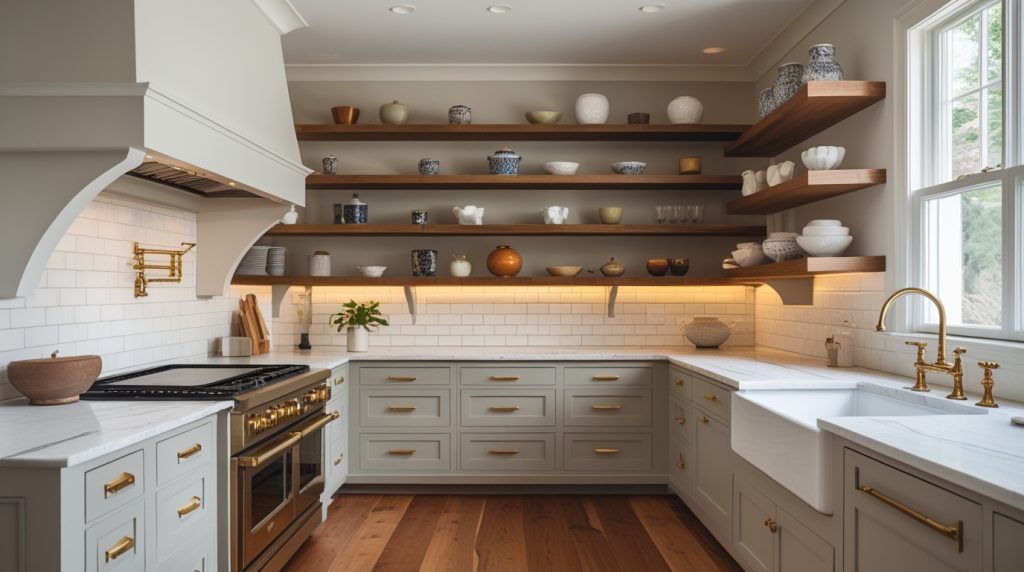
Color: Neutral Foundations with Subtle Contrast
A timeless kitchen doesn’t rely on bold colors or high-contrast palettes to make a statement. Instead, it leans into neutrality and subtle contrasts. White remains a staple — crisp, clean, and endlessly adaptable — but it doesn’t have to dominate the entire room.
Soft greys, warm taupes, ivory, muted blues, and earthy greens all evoke a classic feel. These hues don’t shout, but they don’t date quickly either. Pairing them with natural woods, brushed metals, or soft stone creates visual interest without straying into trend territory.
Use contrast carefully. A navy or charcoal island in a white kitchen adds drama without feeling over-designed. Brass or matte black hardware adds contrast and polish, and age beautifully over time.
Keep the palette cohesive. Let the texture of your materials do the heavy lifting rather than relying on color alone.
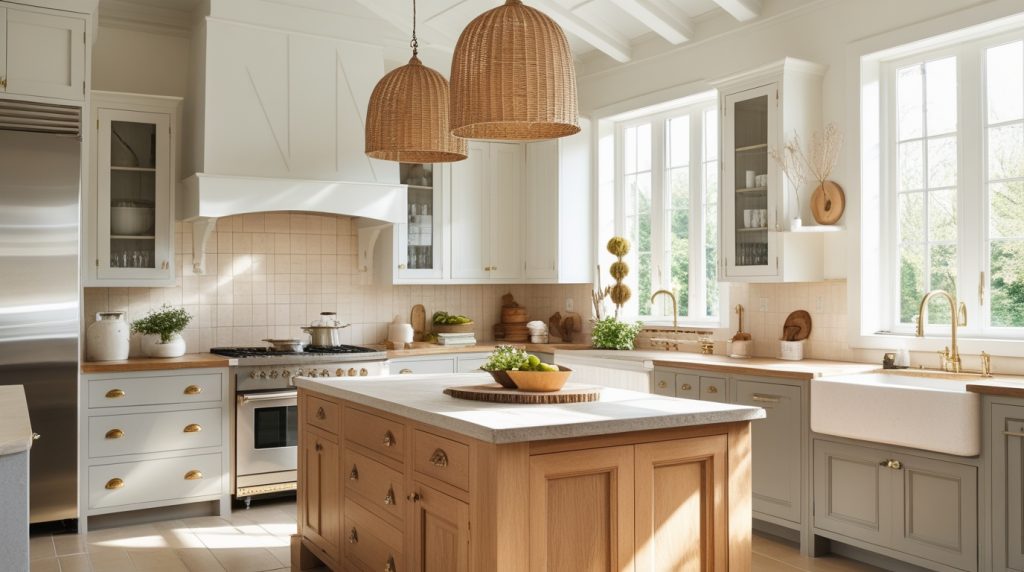
Lighting: Functional, Layered, and Architectural
Lighting in a timeless kitchen is about more than just illumination — it’s part of the room’s architecture. A well-lit kitchen layers natural light, task lighting, and ambient light to create depth and warmth.
Start with daylight. Maximize windows and minimize visual obstructions. Transoms, skylights, and glass doors all contribute to a sense of spaciousness.
Then, layer in fixtures. Pendant lights over the island, under-cabinet lighting for countertops, and a central ceiling fixture are all classic choices. Materials like aged brass, black iron, or frosted glass feel vintage-inspired yet modern.
Recessed lighting has its place, but avoid relying on it entirely — it can flatten the room. Choose lightbulbs with a warm temperature (2700–3000K) to keep the kitchen from feeling sterile.
The goal is flexibility: a space that feels bright for prep and soft for evening meals.
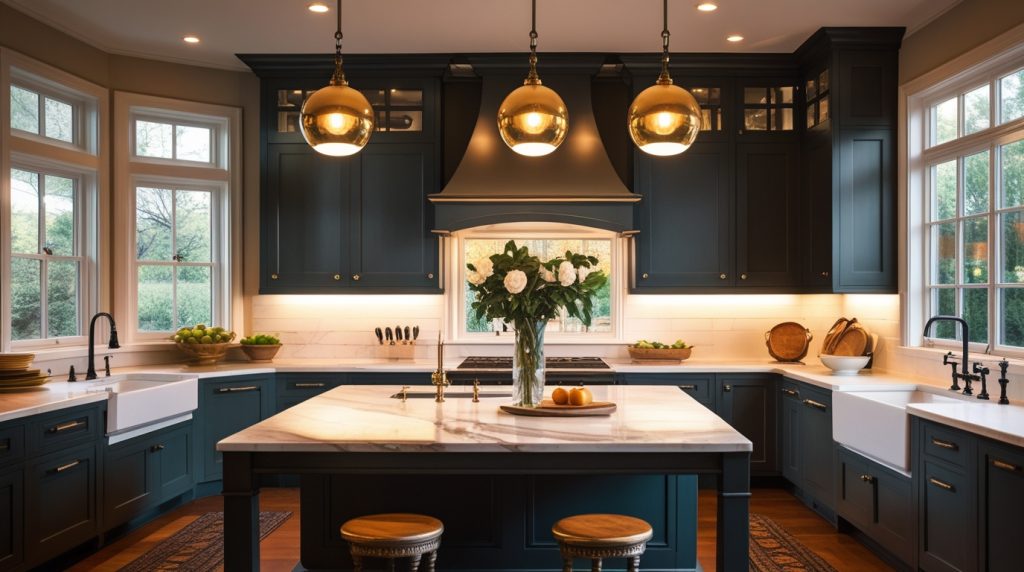
Storage Solutions: Hidden, Handy, and Harmonious
Timeless design also accounts for real life — and real-life kitchens require storage. The trick is to make it functional without disrupting the visual balance.
Opt for cabinetry that blends seamlessly into the architecture. Floor-to-ceiling cabinets can hide pantry items or appliances, while pull-out drawers make everyday essentials easy to access. Appliance garages, corner cabinets with lazy Susans, and deep drawers for pots and pans are smart, user-friendly touches.
Use open shelving sparingly. A single wall with open wood shelves can add warmth and personality, but too much open space can quickly lead to clutter. Display curated items like ceramic bowls, wood cutting boards, or vintage glassware for a lived-in yet edited feel.
The goal: a kitchen that feels clean, but never sterile — organized, but not clinical.
Conclusion: Designing for Beauty That Lasts
A timeless kitchen is less about chasing what’s “in” and more about building what endures. It’s grounded in natural materials, classic lines, and human-centered design. It borrows from the past, embraces the present, and is built to outlast passing fads.
Whether you’re planning a full-scale renovation or making subtle upgrades, these guiding principles will help you craft a kitchen that will still feel beautiful, functional, and inviting in 10, 20, or even 30 years.
Final Words
If you’re dreaming of a kitchen that feels both fresh and forever, start with these timeless design elements. And for more curated inspiration, sign up for our newsletter to get kitchen tips, design trends, and renovation insights delivered weekly.







